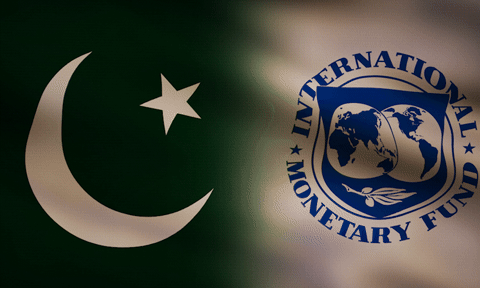ISLAMABAD: Pakistan is the 5th most populous country in the world with a total population of 241.49 million with an annual growth rate of 2.55 per cent.
Launching the “Digital Census Key Findings Report” in Islamabad on Thursday, the Minister for Planning and Development, Ahsan Iqbal has said transparency was ensured in the country’s first ever digital census through use of technology. He said that the collaboration among different institutions facilitated the smooth conduct of the census. He said NADRA provided the expertise for the development of software for the census.
According to the Digital Census Key Findings Report, Pakistan is the 5th most populous country in the world with a total population of 241.49 million including Punjab 127.69 million, Sindh 55.7 million, Khyber Pakhtunkhwa 40.86 million, Balochistan 14.89 million and Islamabad 2.36 million. Karachi is ranked 1st most populous city with population of 20.4 million, Lahore is 2nd with 13 million, Peshawar is the 3rd with 4.76 million and Quetta is 4th with 2.59 million.
The report further says that population growth rate is 2.55 per cent including Khyber Pakhtunkhwa 2.38 per cent, Balochistan 3.2 per cent, and Punjab 2.53 per cent and Sindh 2.57 per cent. 51.48 per cent population of Pakistan is male while 48.51 per cent is female.
The current population growth rate of Pakistan is the highest in the region as well as among the top 30 countries in the world having a high growth rate. There are only 27 countries in the world mostly of Sub Saharan Africa having growth rates higher than Pakistan. Pakistan in terms of Population Growth Rate ranked at 191 in the world. It is pertinent to mention that if this population growth rate persists, the population of Pakistan will be doubled by 2050.
According to the report, the age pyramid reveals that a majority of the Pakistan population is young. It is pertinent to mention that 79 per cent population of Pakistan is below 40 years. Pakistan has the highest percentage of youth population which can play a pivotal role in the development and prosperity of the country by imparting them quality education and emerging skills.
There is 40.56 per cent population under 15-year, 26 per cent between 15 to 29 years and 79 per cent below 40 years. The rural population is 61.12 per cent while 39 per cent lives in urban areas. KP has the lowest urban population with 15 per cent and Sindh has the highest urban population with 54 per cent, whereas, urban share of Punjab is 52 per cent and 31 percent in Balochistan.
About religions, major religion of Pakistan is Islam with Muslims contributing 96.35 per cent of the total population followed by Hindus with 1.61 per cent, Christians with 1.37 per cent and schedule cast with 0.56 per cent. The total population of minorities in Pakistan is 8.7 million with 44.09 per cent Hindus and 37.63 per cent Christians among the minorities. In Sindh, the population of Hindus is 3.34 million with 64.87 per cent of minorities residing in the province. The total minorities’ population in KP is 3.5 million which constitute 87.07 per cent of Hindus.
The report further reveals that 104.15 million population (10 years and above) of Pakistan is literate which is 61 per cent of the total population of Pakistan. The highest literacy rate was observed in Islamabad with 84 per cent, the Punjab province ranked as 2nd with 66 per cent, province Sindh ranked as 3rd with 58 per cent, KP province ranked as 4th with 51 per cent and Balochistan province ranked as 5th with 42 per cent. 25.37 million Population aged 5-16 years are out of school.
Copyright Business Recorder, 2024





















Comments
Comments are closed.